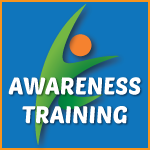The Simple Approach to Osteopenia Exercises

If you are worried about a recent Osteopenia diagnosis or fear acquiring this condition that begins as you lose bone mass and your bones become weaker, but you can actually do lot of to manage this condition.
In fact,
It’s possible to prevent it from developing into osteoporosis (the bone tissue is broken down becoming more fragile and likely to break)
The solution?
Do daily movements to support the body and practice healthy lifestyle habits, and you can see improvements in the strength of your bones.
What you need to know about osteopenia before it progress to the next stage
Your bones help protect and support your body through everyday movements. Quite frankly, we tend to not appreciate all they do until we are faced with an injury such as a broken bone or fracture.
To keep your bones healthy means to keep them strong as you would your muscles. All it takes is one wrong misstep or fall to experience a life changing injury if your bones are not well taken care of.
Here’s the concerning part…….
Most people don’t know that they have this condition until it progresses in osteoporosis. Here are the risk factors you should know to help prevent that.
Top Risk factors include:
- Chronic Inflammation– Inflammatory conditions such as arthritis and inflammatory bowel disease (IBD) can increase the risk for weakened bones
- Gender– Most osteopenia cases of from women. More specifically postmenopausal women due to the decreased levels of estrogen. Men are still encouraged to get checked.
- Genetics– Some people have an increased risk of developing this condition if their is a family history of osteopenia.
- Age– By the year 50, the average person loses about half a percent of bone mass every year.
- Poor lifestyle habits– Preventable causes to this condition include smoking, calcium and Vitamin D deficiency, lack of exercise, and excess alcohol consumption. In addition, some medications have also been associated with the increased risk for osteopenia.
This test is crucial for determining if you have low bone density
Want to know if you have low bone density? Tests are often performed using low-energy x-rays to view the calcium content of a persons bones. Typically the tests are done on the lumbar spine, hips, and wrists as these are the spots are the most likely to fracture or break.
Dual-energy X-ray Absorptiometry (DEXA) is one type of test that is recommended for post menopausal women or women over 65 years old.
Once you know for certain you are a risk,
Here’s what you can do today…
Build Back Strong Bones with These Types of Exercise
The good news?
Having osteopenia doesn’t mean you can’t train your bones to become stronger. You can and I’ll share with you specific exercises you can focus on to meet your needs.
Let me first start off by saying that there is no single workout program that is best for someone with osteopenia. Your exercise selection will also depend on multiple factors such as
- Age
- Fitness Level
- Degree of bone loss
- Time/Availability
- If there are any other health conditions
Therefore,
Before you start any exercise program, speak with your physician to determine what’s safe for your level of osteopenia and general health.
Don’t skip out on weight-bearing exercises
Your bones strengthen under load. (Don’t worry you don’t have to stick yourself under a heavy barbell and start pumping iron like Arnold Schwarzenegger). You can see significant progress just by using your own body weight.
Here’s how to start,
Non Impact Exercises: They don’t directly strengthen bones, but they do help boost energy which can help you progress further (Start with 10 minutes a day, work up to 30 minutes)
- Yoga
- Tai Chi
- Qi Gong
- Pilates
- Walking Meditation
- Swimming
Low Impact Exercises: (Start with 10 minutes 5 days a week and work up to 30 minutes)
- Walking outside or on a treadmill (non incline)
- Walking up stairs or using a stair master
- Low impact aerobics
- Elliptical Training Machines
Moderate Impact Exercises: (After a month or two of low impact exercises work up to moderate impact exercises, 10 minutes a day 3 days a week, working up to 30 minutes)
- Dancing
- Hiking
- Chair Squats
- Stationary Lunge
- Push ups (Start with hands on wall)
- Trx Rows
- Rebounding
High Impact Exercises: (Only when have been cleared to do so. At least 20 minutes a day 3 days a week)
- Jump Rope
- Vigorous dancing
- Jogging
- Weight lifting- Great for building strong bones and muscle
Do this: write down on a piece of paper or your smart phone just one exercise you can implement this week to start strengthening your body and mind and put you on the path to reinforcing your bone strength and create total body health.
P.S If you have been struggling to maintain a healthy lifestyle these past few years and your nutrition and exercise are the missing puzzle pieces to your healthiest life, I want you to give a me call. I’ll answer your most pressing questions about your biggest challenge and provide you next step resources to start making healthy habits stick.
Interested in health screening? If local, check out Aspen Health Screening in Rancho Cucamonga.
References:
